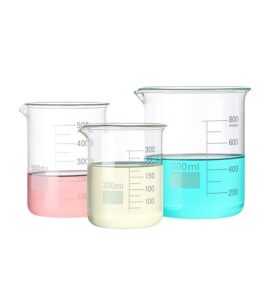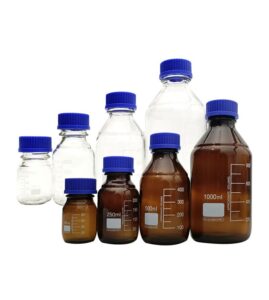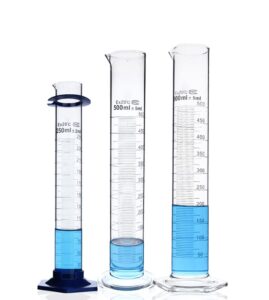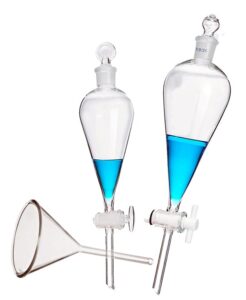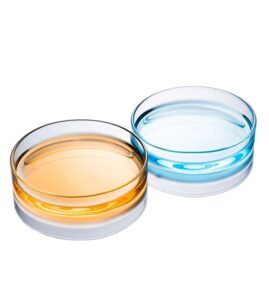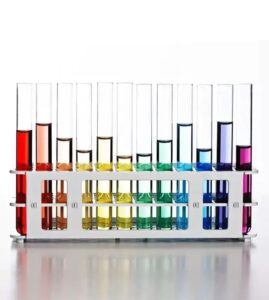Have you ever wondered what goes into maintaining a safe laboratory environment? Is it just about wearing lab coats and goggles, or is there more? How critical is the condition of glassware in ensuring the safety and success of your experiments?
The importance of inspecting glassware in a laboratory cannot be overstated. Damaged or flawed glassware can lead to inaccurate experimental results and, more importantly, pose significant safety risks. This guide is dedicated to helping you understand the steps to properly inspect glassware for any damage.
Knowing how to check for damage in glassware is not just about ensuring the accuracy of your experiments; it’s a vital aspect of maintaining a safe laboratory environment.
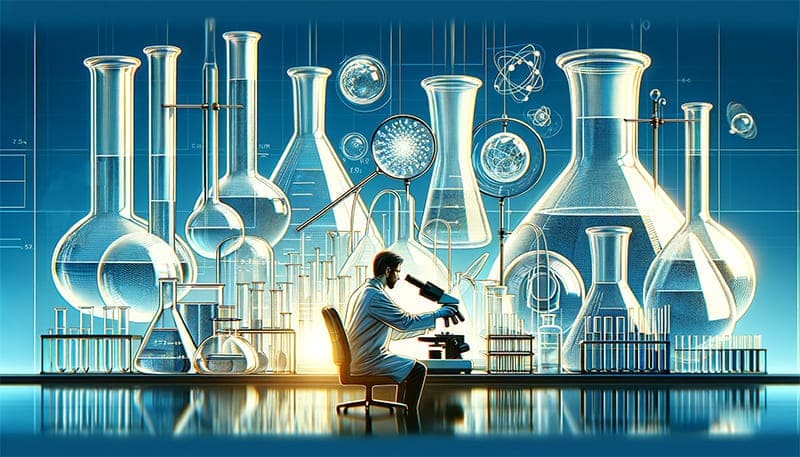
What to Look for When Inspecting Laboratory Glassware
- Surface Check: Examine the surface of the glassware. It should be smooth, clean, and free from oil, watermarks, or other impurities.
- Cracks and Breaks: Look for any cracks, fissures, or breakages, especially around the mouth, base, and sides of the glassware.
- Completeness: Ensure that the glassware is whole, with no missing parts or accessories.
- Fittings Inspection: Check if the fittings of the glassware, like screws, are tight and not loose or missing.
- Seals and Gaskets: Examine rubber seals for any signs of aging, deformation, or damage.
- Additional Components: Ensure all other parts are intact and not damaged or missing.
Inner Glassware Inspection and Performance Check
- Interior Cleanliness: The inside should be clean, without any residue or dirt.
- Internal Defects: Look for internal cracks, bubbles, or other impurities.
- Scale Accuracy: Check if the measurement markings are clear and accurate.
- Transparency: The glass should be transparent, with no fogging or opaque areas.
- Durability: Assess the glassware’s resistance to pressure, pulling, and impacts.
- Sealing Efficiency: Ensure there are no leaks or air escape issues.
Essential Glassware Handling Tips for Enhanced Laboratory Safety
- Handle glassware gently to avoid collisions or falls.
- Clean glassware before use to ensure no residue or dirt is present.
- Follow safety protocols to prevent damage or injury.
- After use, clean and dry glassware promptly to prevent mold or corrosion.
- Replace or repair damaged or substandard glassware immediately.

Detailed Inspection Guidelines for Laboratory Glassware
External Inspection
- Check for Chipping: Inspect the rims and edges for chips, as these can be sharp and dangerous.
- Look at the Bottom: The bottom of the glassware should be flat and stable to prevent tipping over.
- Assess for Staining: Stains can indicate chemical damage or residues that might interfere with experiments.
Checking for Functionality
- Test Ground Joints: Ensure that ground joints fit snugly and smoothly.
- Check Stoppers and Lids: These should fit well and not be too loose or too tight.
- Inspect Spouts: On beakers or pitchers, spouts should be intact and smooth for accurate pouring.
Glassware Cleaning
- Proper Cleaning Techniques: Use appropriate cleaning agents and brushes. Avoid harsh scrubbing which might scratch the glass.
- Rinsing and Drying: Thoroughly rinse and allow the glassware to dry completely to avoid water marks or residue.
- Storage: Store glassware in a clean, dry place to prevent dust accumulation and accidental breakage.
Handling and Use
- Gentle Handling: Always handle glassware with care. Sudden temperature changes or impacts can cause breakage.
- Use as Intended: Don’t use glassware for purposes other than its intended use. For instance, don’t heat a beaker that’s not designed for thermal stress.
- Regular Checks: Incorporate regular inspections into your laboratory routine to catch any damage early.
Reporting and Disposal
- Report Damages: If you find damaged glassware, report it immediately to the laboratory supervisor.
- Safe Disposal: Dispose of broken glassware in designated containers, not in regular trash bins to avoid injury.
Continuous Education
- Stay Informed: Keep up with the latest laboratory safety guidelines and glassware handling techniques.
- Training: Regularly participate in laboratory safety training sessions.

Customized Inspection Protocols: Specific Guidelines for Different Types of Glassware
In a laboratory setting, the variety of glassware used can range widely, from flasks and burettes to pipettes and petri dishes. Each type of glassware has its unique design and purpose, which necessitates specific inspection techniques to ensure their integrity and safety. Providing detailed guidelines for each type of glassware can significantly enhance laboratory safety and the reliability of experimental results.
For Flasks (Erlenmeyer, Volumetric, Florence)
- Neck and Mouth Inspection: Pay special attention to the neck and mouth of the flask, as these areas are prone to stress and damage.
- Volume Markings: In the case of volumetric flasks, ensure that the volume markings are accurate and clearly visible.
- Base Stability: Check the base of the flask for stability and flatness to prevent tipping over during use.
For Burettes
- Valve Functionality: The valve or stopcock must operate smoothly, ensuring precise control of liquid flow.
- Scale Clarity: The graduation marks should be clear and unscratched for accurate measurement.
- Leak Test: Perform a leak test with water to ensure the integrity of the burette.
For Pipettes (Graduated, Volumetric)
- Tip Examination: Inspect the tip for chips or cracks, as these can affect the accuracy of liquid transfer.
- Volume Accuracy: For volumetric pipettes, check that the marked volume corresponds with the actual volume.
- Cleaning Check: Ensure the pipette is clean internally, as residues can alter the volume of liquid drawn up.
General Inspection Tips for All Glassware
- Cleanliness: All glassware must be impeccably clean, free from any residues or contaminants.
- Crack and Chip Detection: Regularly inspect for minute cracks or chips, which can weaken the structure.
- Temperature Tolerance: Be aware of the glassware’s tolerance to temperature changes, especially when using it for heating or cooling purposes.
By customizing the inspection protocols for different types of glassware, laboratories can ensure that each piece of equipment is evaluated thoroughly and is fit for its specific use. This attention to detail not only promotes safety but also contributes to the precision and accuracy of scientific work.

Leveraging Advanced Inspection Techniques for Laboratory Glassware
In the realm of laboratory safety and precision, integrating advanced inspection technologies can significantly elevate the process of examining glassware. The use of sophisticated tools and methods allows for a more thorough and accurate detection of potential flaws that could compromise both safety and experiment accuracy. Let’s delve into some of these advanced inspection techniques.
Magnification Tools for Micro-Crack Detection
- Microscope Examination: Utilizing microscopes to inspect glassware surfaces can reveal minute cracks and chips that are invisible to the naked eye.
- High-Resolution Cameras: These can capture detailed images of the glassware, which can be examined closely for any structural imperfections.
Stress Analysis Techniques
- Polarized Light Inspection: This method involves using polarized light to detect stresses in the glass. Stress points can indicate weak areas that are more susceptible to breaking.
- Thermal Imaging: Thermal cameras can detect uneven temperature distribution in glassware, which is often a sign of internal stress or structural weakness.
Ultrasonic Testing for Internal Defects
- Sound Wave Analysis: Ultrasonic testing uses high-frequency sound waves to detect internal flaws. This method is particularly useful for thick-walled glassware where visual inspection isn’t sufficient.
Chemical Testing for Material Integrity
- Reagent Tests: Certain chemical reagents can be used to test the glass surface for weaknesses or chemical alterations that could affect its integrity.
Implementing Technology in Routine Checks
- Regular Scans: Incorporating these technologies into regular inspection routines ensures continuous monitoring of the glassware’s condition.
- Training for Laboratory Personnel: Proper training in these advanced techniques is crucial for laboratory staff to effectively identify and address potential issues with glassware.
By adopting these advanced inspection techniques, laboratories can significantly enhance their capacity to maintain high safety standards and ensure the reliability of their glassware. This proactive approach is pivotal in preventing accidents and maintaining the integrity of scientific research.

Maximizing Lab Safety and Efficiency: Comprehensive Strategies for Glassware Management
Navigating the complexities of laboratory management requires a focus on safety and meticulous maintenance, especially when it comes to glassware. The subsequent section of this guide offers a deep dive into the best practices for glassware care. From implementing preventive maintenance schedules and handling emergency situations, to fostering a culture of safety and addressing environmental health standards, these strategies are designed to elevate the care and handling of laboratory glassware. This approach not only ensures the safety and efficiency of lab operations but also contributes to the longevity and reliability of essential laboratory equipment.
Implementing a Preventive Maintenance Schedule for Laboratory Glassware
Regular Maintenance Routines
- Scheduled Inspections: Establish a regular schedule for inspecting glassware. This could be weekly, monthly, or based on usage frequency, depending on the laboratory’s needs.
- Preventive Wear and Tear Checks: Regular checks help identify early signs of wear and tear, allowing for timely maintenance or replacement.
- Life Span Tracking: Keep records of the age and usage of glassware to predict when replacements might be needed, thus preventing unexpected failures.
Emergency Response: Handling Breakages and Spills
Procedures for Glassware Accidents
- Immediate Actions: Outline the immediate steps to be taken in the event of glassware breakage, such as securing the area and safely removing debris.
- Spill Containment: Provide detailed procedures for containing spills, including the use of absorbents and neutralizing agents for hazardous materials.
- First Aid Measures: Include guidelines for addressing injuries caused by broken glassware, such as cuts or exposure to hazardous substances.
Cultivating a Culture of Safety in the Laboratory
Promoting Safety-First Mindset
- Regular Safety Meetings: Hold regular meetings or briefings to discuss safety protocols and share best practices.
- Encouraging Reporting: Foster an environment where staff feels comfortable reporting potential hazards or near-misses.
- Rewarding Safe Practices: Recognize and reward adherence to safety protocols, encouraging a proactive approach to laboratory safety.
Environmental and Health Safety Considerations
Handling and Disposal of Hazardous Materials
- Safe Handling Guidelines: Provide instructions for safely handling glassware that has been in contact with hazardous chemicals, including wearing appropriate PPE.
- Cleaning Protocols: Establish protocols for the proper cleaning of contaminated glassware to prevent exposure and cross-contamination.
- Disposal Procedures: Detail the procedures for disposing of both broken glassware and chemical waste, adhering to environmental and safety regulations.
By integrating these elements into the daily operations of a laboratory, the safety and longevity of glassware can be significantly enhanced. This comprehensive approach ensures that every aspect of glassware usage, from maintenance to emergency response, is addressed, thereby fostering a safe, efficient, and responsible laboratory environment.
Conclusion
In conclusion, “Ensuring Laboratory Safety: The Ultimate Guide to Inspecting Glassware for Damage” is more than just a guide; it’s an essential tool in the pursuit of scientific excellence and safety. Remember, every small step towards better glassware care contributes significantly to overall laboratory safety. Embrace these practices, share this knowledge with your peers, and let’s collectively uplift the standards of scientific research. Stay informed, stay safe, and let’s make our laboratories exemplary spaces of innovation and safety.


